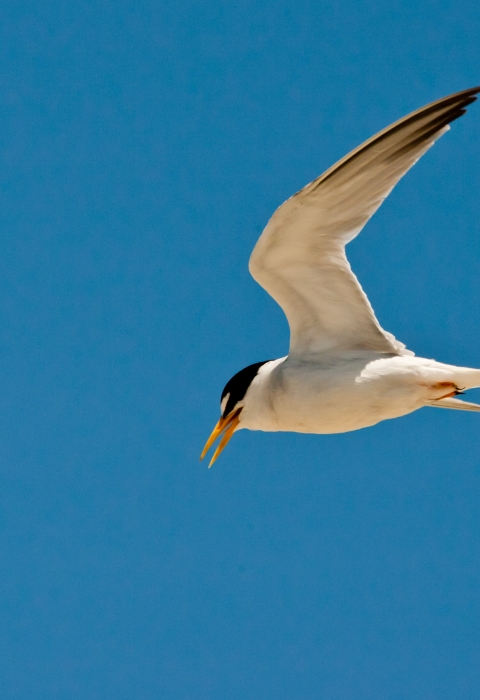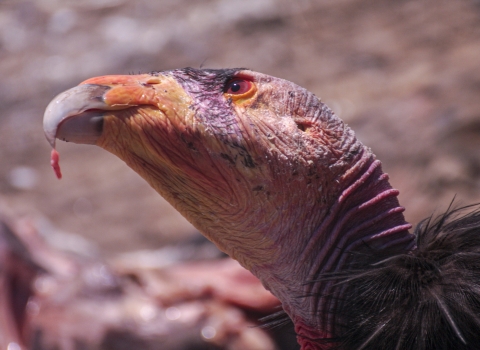| Status: Endangered |
| Date listed: June 2, 1970 |
Distribution: California, Arizona, Mexico |
| Wingspan: 75 cm |
The California least tern is the smallest of the tern species, measuring less than ten inches in length and weighing 45 to 55 grams. The total wing length is approximately four inches. This subspecies has a short, forked tail, and a long, slightly decurved, tapered bill (Sibley 2000). Males and females are both characterized by a black cap, gray wings with black wingtips, white underbody, orange legs, and a black-tipped yellow bill.
The California least tern breeds in the United States only along the immediate coast of California from San Francisco Bay south to the Mexican border. Unfrequented sandy beaches close to estuaries and coastal embayments had historically served as nesting sites for this species, but by the 1960s, suitable nesting areas were severely reduced due primarily to coastal development and intense human recreational use of beaches. As a result, the tern’s numbers diminished from uncountable thousands to several hundred by 1970, when the least tern was added to the Federal Endangered Species List.
At Seal Beach NWR, least terns currently nest on a peninsula referred to as NASA Island, a three-acre fill site that was converted from military use to a potential least tern nesting site between 1977 and 1979. Historically, California least terns likely foraged in Anaheim Bay and nested on the adjacent coastal beaches of Seal Beach and Sunset Beach. Intensive human use of these beaches likely caused the birds to seek nesting sites elsewhere along the coast.
Please read the Seal Beach NWR Comprehensive Conservation Plan, Volume I, Chapter 4, page 4-59 for a complete description.


